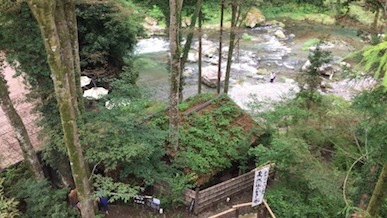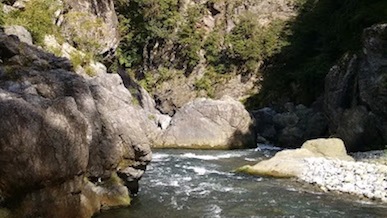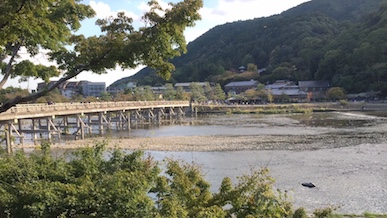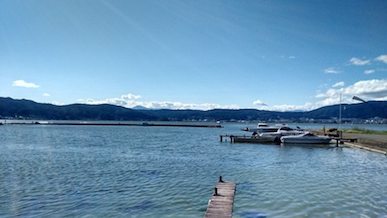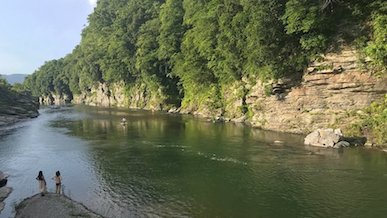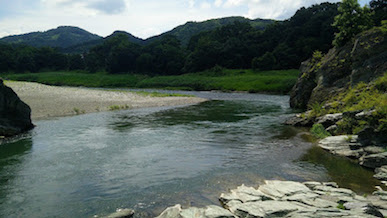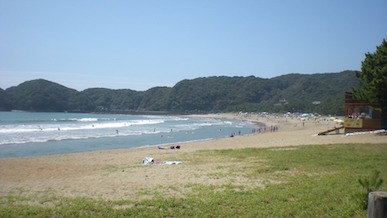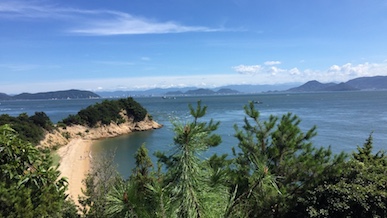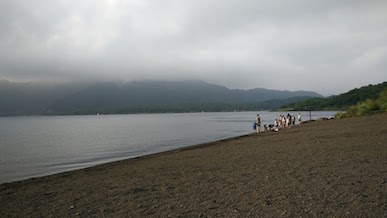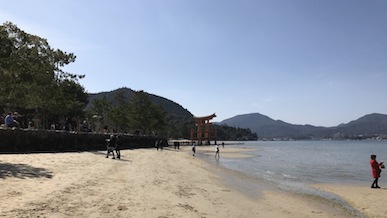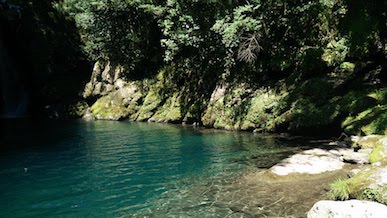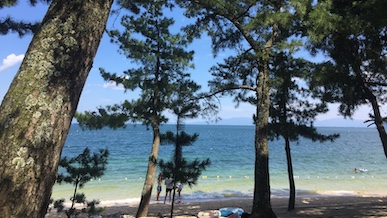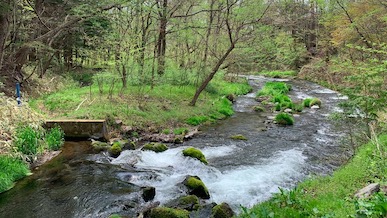Popular for camping, swimming and barbeques, Akigawa Valley has some gorgeous river gorge spots. Set up for the day with your own private patch of riverbank and enjoy some first-class rock-jumping. What’s more, you can warm up afterwards with birdsong in a pine forest-top onsen
If you are looking for a mountain lake with a local feeling you may want to try Lake Suwa in the Kiso Mountains, Nagano Prefecture. If you also want to swim in it we should warn you that the water is green with algae and may not be safe, but it’s not too cold in the summer.
Of course, for most people no visit to Japan is complete without Kyoto, but give it a couple of days of temples and shrines and you might want a break. Try something different with this beautiful stretch of blue river, a short stonesthrow from the bamboo grove at Arashiyama.
You may or may not have heard the rumours about the white water rafting craze sweeping Nagatoro in Saitama. It’s all true, but pick the right spot and there are some great swims to be had, too. What’s more there’s a Showa-era shotengai, camping nearby, and a well-stocked convenience store just around the corner!
Hang up your hang ups, forget what you heard about Saitama and put on your swimmers, this patch of river is the real deal. Rock jumping, fast currents and cool river water await you with a riverside beer vending machine for your convenience. One of the more peaceful stations in Chichibu but still so easy to get to, even on a day trip.
The South of Izu Peninsula has a lot to offer. If you like wild landscapes, rocky beaches in the middle of the forest and volcanic cliffs, you will love Minami Izu. The deep blue sea is also incredibly clear. This place is a paradise for campers and snorkelers who want to get lost for a week-end.
Amazing swimming spot on the island of Shikoku close to Kansai region. The emerald-turquoise waters and waterfall are breathtaking. The visibilty in the clear water is also ideal for snorkelling and jumping off the rocks.
FAQ – Wild Swimming in Japan: Expert Tips
1. Where are the best wild swimming spots near Tokyo?
Akigawa River in Chichibu–Tama–Kai National Park and Hatonosu Ravine are popular for clear water swimming and scenic views. [oai_citation:0‡youtube.com](https://www.youtube.com/watch?pp=ygUMI2pqZW1hbmdlbmFr&v=TrtWVQJx5-g&utm_source=chatgpt.com) [oai_citation:1‡internationaltraveller.com](https://www.internationaltraveller.com/asia/japan/japan-swimming/?utm_source=chatgpt.com)
2. Is it legal to swim in all Japanese rivers and lakes?
No. Many natural spots are sacred or protected, and swimming may be restricted—always follow local guidance.
3. Can I swim with a view of Mount Fuji?
Yes, Lake Motosu in the Fuji Five Lakes region offers pristine waters and stunning Mt Fuji views, often guided.
4. Are there natural waterfall pools safe for swimming?
Ryumon Falls in Ōita and Ta‑Taki Falls in Okinawa have natural plunge pools ideal for cool dips in summer.
5. What precautions are needed for wild swimming?
Watch for rising water, slippery rocks, and wildlife. Always bring a companion and local advice.
6. Can children swim in wild rivers?
Yes, shallower spots like Senjokawara on Kyushu are family‑friendly, but always supervise closely.
7. Is cold water swimming common in Japan?
Yes—many rivers and alpine lakes stay icy even in summer, offering refreshing dips in mountain areas.
8. Are there wild beach spots for swimming?
Small secluded beaches on Naoshima, Zamami, and Izu are ideal for private beach swims.
9. What wild swims are accessible from Tokyo in one day?
Akigawa River and Nagatoro in Saitama are reachable within 2 hours for a day trip.
10. Can you swim on Yakushima?
Yes, Kurio River plunge pools are pristine and scenic, ideal for wild swimming after hikes.
11. Are snorkeling or kayaking available in wild spots?
At Lake Motosu, snorkeling and guided kayak tours offer scenic wild swimming adventures.
12. Any Japanese island swim destinations for clear water?
Yes—Nii‑jima, Zamami, and Izu islands offer clear coastal swims and hidden waterfall pools.
13. What equipment should I bring?
Bring water shoes, towel, biodegradable soap, first‑aid kit, and a dry bag for valuables.citeturn0search4
14. When is the best season for wild swimming?
Summer to early autumn (June–October) is ideal, but check local safety for rainy seasons.citeturn0search4
15. Can I camp near wild swimming spots?
Yes—places like Akigawa Valley and Kurio River have campsites nearby; always follow park rules.citeturn0search0turn0search5
